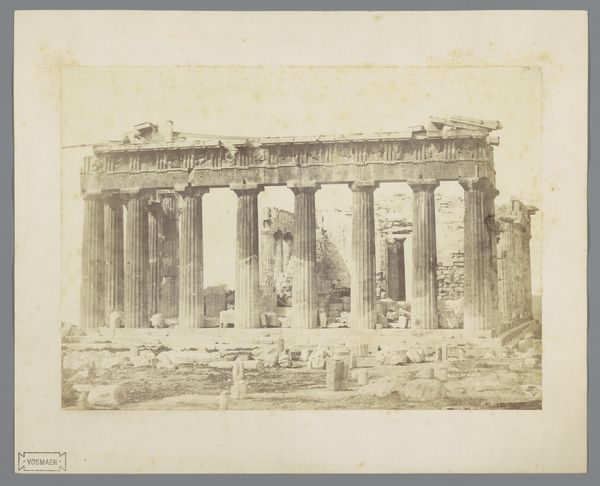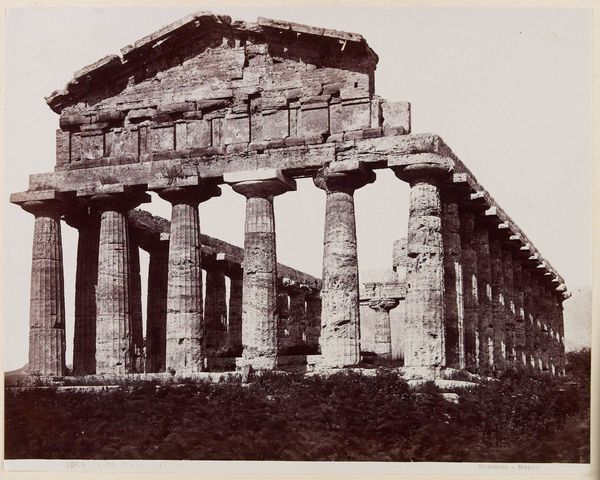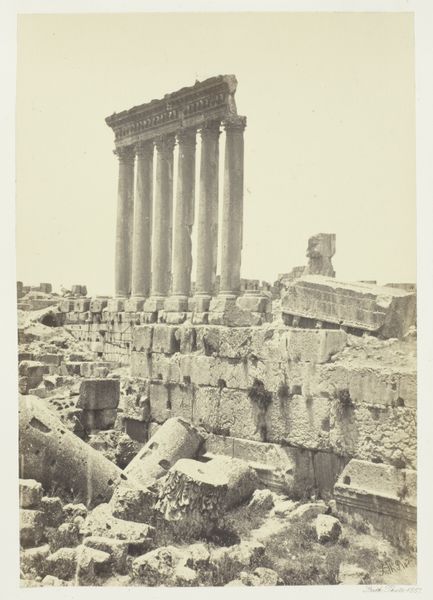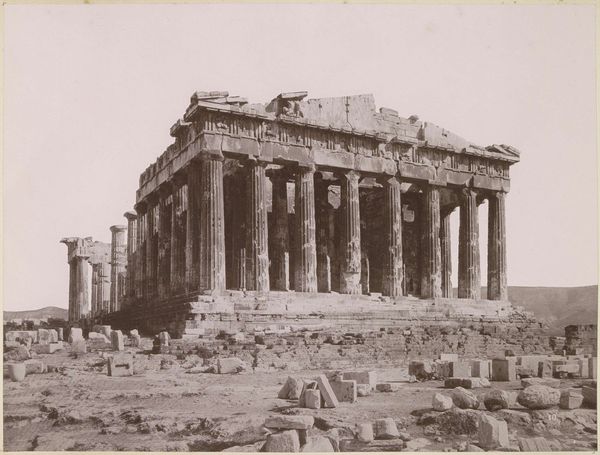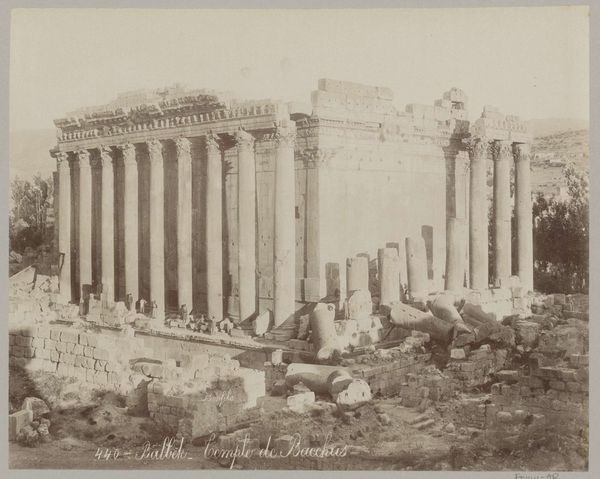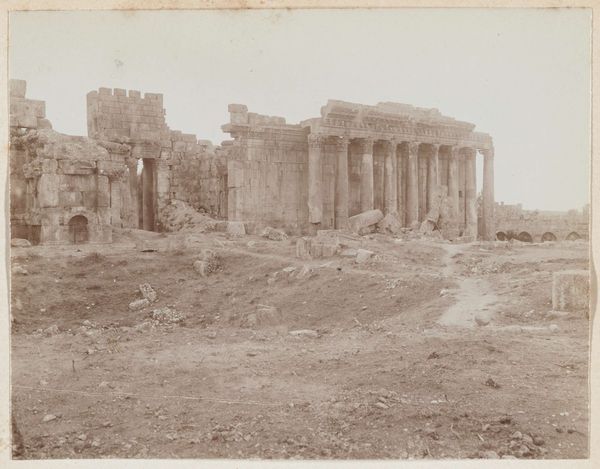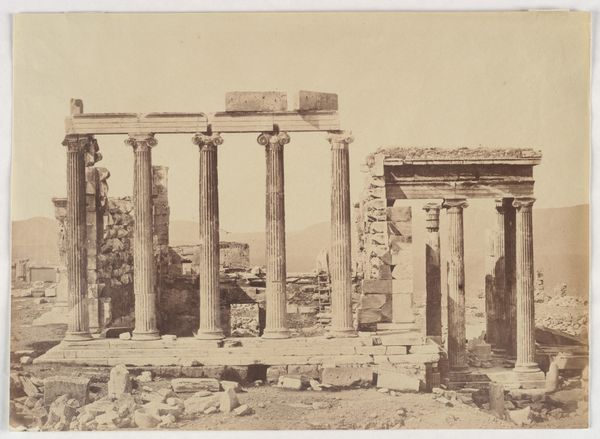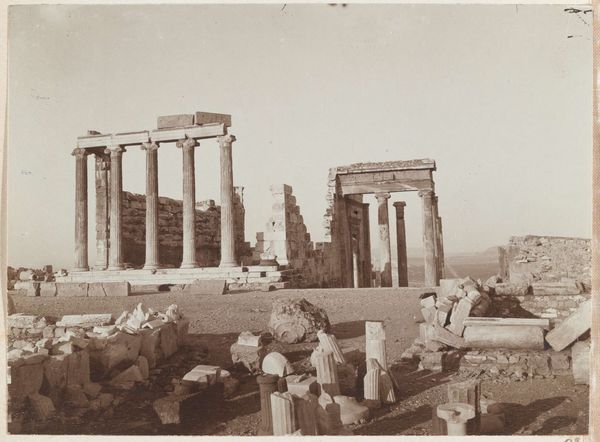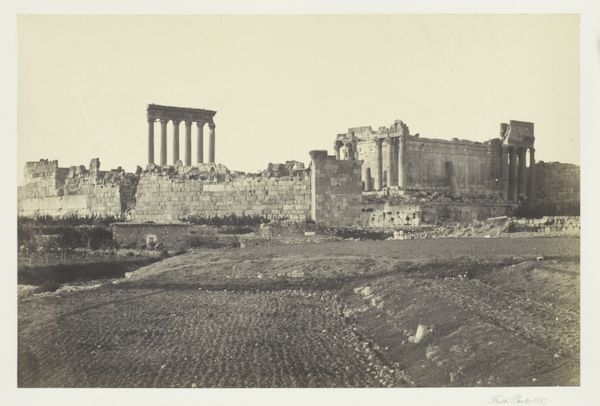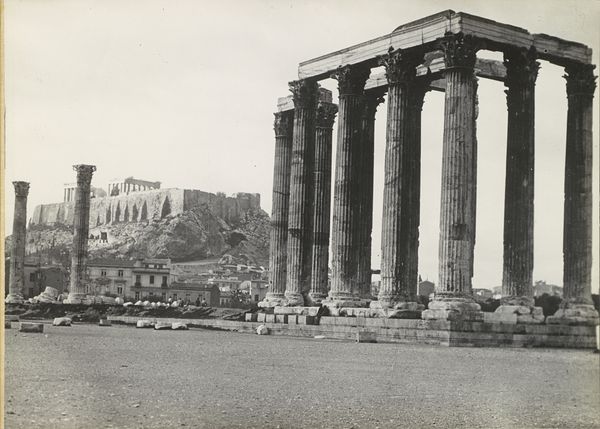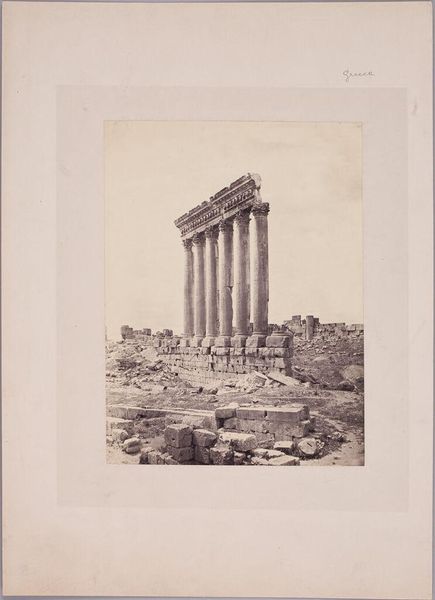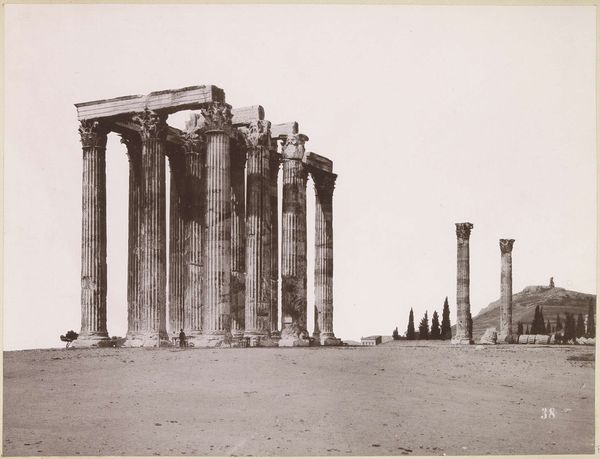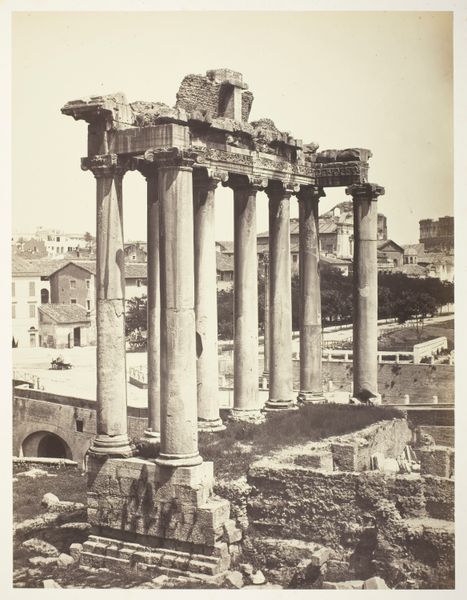
photography
#
natural tone
#
greek-and-roman-art
#
landscape
#
photography
#
ancient-mediterranean
#
watercolor
#
realism
Dimensions: height 259 mm, width 360 mm
Copyright: Rijks Museum: Open Domain
This is Eugène Piot’s photograph, “Parthenon on the Acropolis, Athens.” Piot made this print some time in the mid-19th century, as photography was transforming the concept of documentation. Piot, an archaeologist and collector, presents us with a Parthenon that is already a ruin. In its time, the Parthenon was a temple, a church, and a mosque. It was also used as a storehouse for gunpowder, which caused considerable damage when it exploded in 1687. Piot’s photograph exists within a context of shifting national and religious identities as the Ottoman Empire waned and European nations cast their eyes on Greece as the origin of Western civilization. The emotional impact of this photograph lies in its simultaneous evocation of grandeur and decay. In a way, Piot asks us to confront the fragility of human achievement and the inexorable passage of time. The Parthenon has survived wars, earthquakes, and cultural shifts. Piot’s picture reminds us that even the most enduring symbols are subject to change and reinterpretation.
Comments
No comments
Be the first to comment and join the conversation on the ultimate creative platform.
